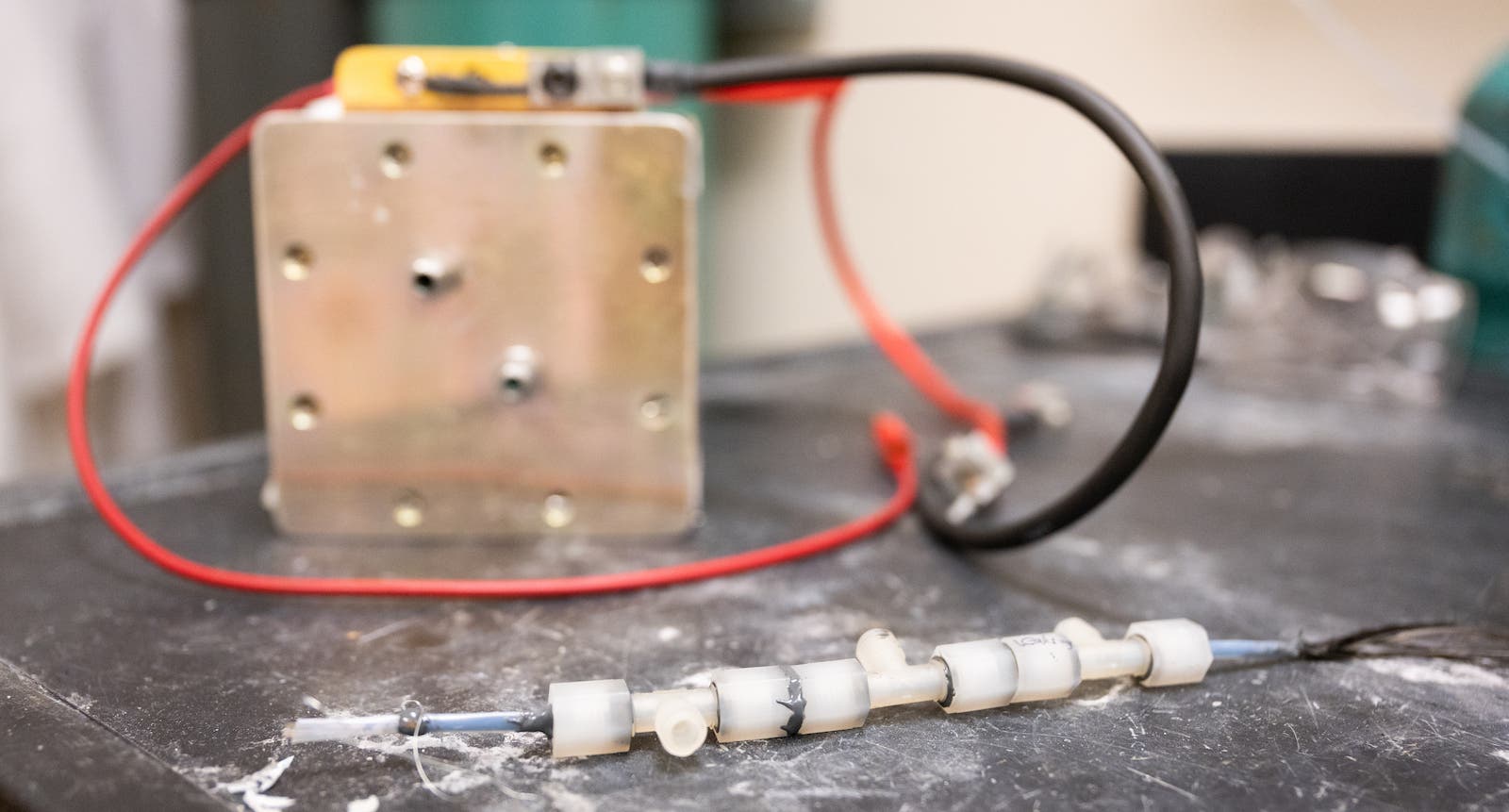Home Energy Storage Is Getting A Flow Battery Makeover
Support CleanTechnica's work through a Substack subscription or on Stripe.

The cost of home energy storage is continuing to drop, with lithium-ion batteries dominating the market. If the trend continues, it won’t be long before whole-house battery packs are as common as refrigerators and other must-have appliances. That could include new flow battery technology, too. Once limited to utility-scale uses, flow batteries are coming down in size as well as cost.

Down Goes The Cost Of Home Energy Storage
All else being equal, any reduction in the price of batteries will be reflected in the cost of a home energy storage system. That “all else” refers to labor and other balance-of-system elements that go into the total, installed cost of a whole-house battery.
Lithium-ion stakeholders have certainly done their part to bring down costs. Last January, Bloomberg noted that the cost of lithium-ion batteries dropped 80% per kilowatt-hour from 2013 to 2021.
The US Department of Energy’s National Renewable Energy Laboratory (NREL) surveyed the landscape in 2021 and credited the falling cost of lithium-ion batteries with continuing to drive down the installed cost of home energy storage systems, despite a slight uptick in balance-of-system costs.
NREL notes that predicting future cost trends is a difficult exercise. However, last year NREL ran the numbers and came up with a continuation of the downward spiral for lithium-ion home energy storage, even under a conservative scenario.
What Is A Flow Battery, Anyways?
Flow batteries are new to the home energy storage scene, although the technology has been around since the 20th century. The basic outlines are simple. You take two tanks of complementary fluids and open the spigots. The fluids interact and deploy their special chemistry to generate an electrical charge, under the watchful eye of a membrane chaperone. Researchers have also been working on membrane-free flow batteries, but that’s somewhere off in the future (our complete coverage is here).
Compared to conventional lithium-ion batteries, flow batteries have several key advantages. “Flow batteries can be recharged without degrading the way conventional batteries do. They can also provide energy storage over long periods of time, because the two liquids can be stored indefinitely in their own tanks until somebody needs electricity,” CleanTechnica noted back in 2020.
The safety factor also comes into play. Depending on the particular chemistry of the flow battery, the fluids can deploy nontoxic, earth-abundant, non-flammable materials. That has attracted the attention of the US Department of Defense, which has tapped Lockheed Martin to install a flow battery at Fort Carson in Colorado.
Electric vehicle stakeholders have also been eyeballing flow battery technology for both safety and performance enhancements.
A Flow Battery In Every Pot
Not much has come of the flow battery electric vehicle idea, partly because the technology is best suited for utility-scale scenarios and other supersized uses — until recently, that is. A decade or so of R&D work has brought the size of flow batteries down considerably.
Flow batteries scaled for residential use are already on the market. The sticking point now is the price tag. The cost of both flow batteries and lithium ion batteries for whole-house use is currently on par with the cost of adding on a new HVAC system, if not more. That up-front cost can put them out of reach for many home owners, regardless of any savings on utility bills over the long term.
The online solar marketplace Energy Sage provides an easy-to-use, zip code lookup tool for estimating the cost of a a whole-home energy storage system with rooftop solar. It ain’t cheap.
Driving Down The Cost Of Flow Batteries
In terms of saving the planet from catastrophic climate change, a sharp drop in the cost of home energy storage would enable more home owners to support the acceleration of wind and solar development.
That’s where the new flow battery from the Georgia Institute of Technology comes in. A research team based in the Georgia Tech laboratory of assistant professor Nian Liu has been working on a new configuration that cuts down the size of a flow battery cell by an impressive 75%, along with a corresponding reduction in costs.
The team achieved the 75% mark by ditching the decades-old, bulky planar cell design that previous generations of flow battery engineers have replied upon.
“… commercial flow batteries are still based on cell configurations developed decades ago. The planar configuration exhibits a large cell size with bulky components for high performance, which results in low volumetric power density, high footprint and capital cost,” the team explained earlier this year, by way of reporting the results of their work in the Proceedings of the National Academy of Sciences.
Instead of using the planar configuration, the Georgia Tech team focused on a new architecture that involves bundles of nano-scale tubes. The tube configuration is commonly used in chemical separation processes under the name sub-millimeter, bundled microtubular (SBMT) membrane.
“This innovation has a space-saving design that can mitigate pressure across the membranes that ions pass through without needing additional support infrastructure,” the Georgia Tech website explains.
Home Energy Storage For The Energyshed Of The Future
You can get all the details from PNAS under the title, “A submillimeter bundled microtubular flow battery cell with ultrahigh volumetric power density,” in which the authors explain that they demonstrated their new SBMT cell design using zinc–iodide chemistry.
“[O]ur SBMT cell shows peak charge and discharge power densities of 1,322 W/Lcell and 306.1 W/Lcell, respectively, compared with average charge and discharge power densities of <60 W/Lcell and 45 W/Lcell, respectively, of conventional planar flow battery cells,” the team reported, with W/L referring to the volumetric power density of the flow cell.
The team also demonstrated that their new cell is compatible with other flow battery chemistries, including zinc–bromide, quinone–bromide, and vanadium.
Next steps include shifting to an automated process for fabricating the hollow fiber module with an eye on testing at Georgia Tech’s in-house 1.4 megawatt microgrid, and onwards to commercialization.
If all goes according to plan, the new flow battery and other home energy storage technologies will be on the radar of the Energy, Policy, and Innovation Center arm of the Strategic Energy Institute at Georgia Tech. EPICenter has been tasked with leading a Department of Energy-funded initiative to develop the Georgia Energyshed, which will serve as a planning tool for distributed energy resources. That includes energy storage as well as generation and distribution.
The idea is to apply the watershed model for water resources, and develop a modern approach to electrification that eschews centralized power plants in favor of solutions that provide for community benefits.
The Energyshed project is in good hands, as Georgia Tech happens to one of the top-rated public universities in the nation. In addition, the Georgia Department of Economic Development has been busily promoting the state as a hub for electrification innovation.
Despite the anti-ESG grumblings of some leading public officials, Georgia continues to devote considerable public resources to pushing the decarbonization envelope, with nationwide implications as well as home-state economic benefits. Does one hand know what the other one is doing? Who knows! If you have any thoughts about that, drop us a note in the comment thread.
Find me on Spoutible: @TinaMCasey or LinkedIn @TinaMCasey or Mastodon @Casey or Post: @tinamcasey
Photo: A new flow battery cell under development, courtesy of the Georgia Institute of Technology.
 Sign up for CleanTechnica's Weekly Substack for Zach and Scott's in-depth analyses and high level summaries, sign up for our daily newsletter, and follow us on Google News!
Sign up for CleanTechnica's Weekly Substack for Zach and Scott's in-depth analyses and high level summaries, sign up for our daily newsletter, and follow us on Google News!
Have a tip for CleanTechnica? Want to advertise? Want to suggest a guest for our CleanTech Talk podcast? Contact us here.
Sign up for our daily newsletter for 15 new cleantech stories a day. Or sign up for our weekly one on top stories of the week if daily is too frequent.
CleanTechnica uses affiliate links. See our policy here.
CleanTechnica's Comment Policy

